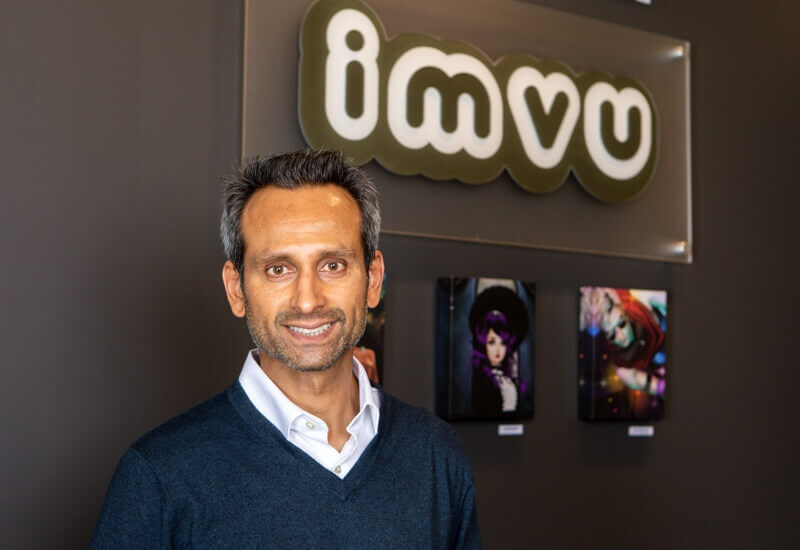Automation allows marketers to scale up app growth significantly faster and manage thousands of paid campaigns across multiple advertising channels—without the expenses of extended manual labor and human errors.
As more and more app publishers take their first steps in automating their workflows, I took a moment to speak with Lomit Patel about the transformation from manual user acquisition processes to data-driven, automated workflows and the dilemma around whether to build or buy the technology. Here are his thoughts.

Lomit Patel is the Vice President of Growth at IMVU, responsible for user acquisition, retention, and monetization. Before IMVU, Lomit managed growth at several early-stage startups, including Roku (IPO), TrustedID (acquired by Equifax), Texture (acquired by Apple), and EarthLink. Lomit is an active public speaker, mentor, and advisor and recognized as a Mobile Hero.
Lomit’s new book Lean AI, which is part of Eric Ries’ The Lean Startup series, is now on sale! The book provides practical advice on how innovative companies use artificial intelligence and automation to scale up growth significantly faster with a lean team.
What led you to write Lean AI?
I have had massive success leveraging AI and automation to make IMVU into the world’s largest avatar-based social networking app. I wrote this book to help inspire others to embrace the future of autonomous marketing, based on my personal experience on what it takes to build and leverage an “intelligent machine” to turbocharge your business growth in the era of big data.
How did IMVU’s transformation from ‘manual’ to ‘automated’ begin?
This journey began when I was hired by the CEO to figure out quickly how to make IMVU’s new mobile app into a success with limited resources. I knew we had no choice but to transform away from the old manual processes into embracing AI-powered, automated UA workflow. This enables us to increase our rate of learning by running thousands of experiments at scale to figure out what works and doesn’t quickly without the overhead of manual processes or intervention — to usher in the new age of Autonomous Marketing.
What were the biggest challenges in building the technology?
Every company will face the same dilemma around whether to build or buy the technology. This is an important decision for businesses of all sizes, but especially startups because they are, by definition so very resource-constrained with time, budget, and people. There are high costs to support AI—building teams of data scientists and machine learning engineers, building data infrastructures, and maintaining all of these resources. Making the wrong decision could have severe consequences to the long-term success—or even viability—of the business.
What are the most significant advantages and disadvantages of building vs. buying?
The biggest advantage to either option of building vs. buying comes down to opportunity costs. The goal in business is always to minimize costs now and costs later. Therefore, the deciding factor is delivering something of value that your growth marketing team can leverage to start generating revenue from it. Buy if it enables you to start generating revenue sooner. Build it if it allows you to start generating revenue faster if you have the resources to do it successfully. Once you’ve built it and validated that it delivers the expected benefits, you can optimize by replacing whatever parts you need with bought or built components until there’s no more benefit to optimizing further.
Investing in building an infrastructure for your company can be the right decision for the long term if you have complicated niche use cases as you scale, and the economics of your AI solution become more favorable. When you buy software from a third-party SaaS partner, possibly the pricing model doesn’t scale quite as linearly. On the other hand, sometimes buying from a third party SaaS partner turns out to be the right decision in the long term. When you consider buying, it’s important to fully understand whether it is capable of solving your unique use case problems.
Would you recommend app publishers to invest in building in-house automation tools, and why?
At most startups, building in-house AI and automation tools isn’t a good option because they don’t have the dedicated resources available to build and support a complicated project of this magnitude. Most startups have a limited number of technical and data resources and need to focus on their own core products. The best viable option is to find a SaaS partner who has the solution and resources to solve this problem for you because it’s an expensive project to build and then maintain it.
When it comes down to it, the risks, costs, and distraction factor of building intelligent, AI-powered marketing automation into your product road map will not likely outweigh the benefits of working with a SaaS partner.
This article first appeared on BidShake.





